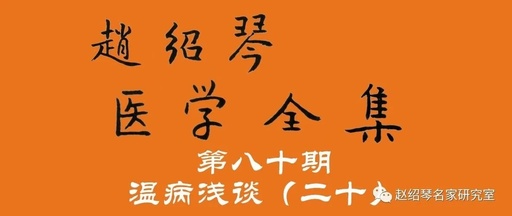Differentiation of Pulse Patterns in Warm Diseases: String Pulse and Slippery Pulse
String Pulse (Xian Mai) is characterized by a straight and long pulse, resembling a taut bowstring, often indicating a condition of stagnation.
Characteristics: The pulse is firm and straight, with a bouncing sensation on both sides, similar to the strings of a musical instrument. When combined with other pulse types, it can indicate stagnation, blood deficiency, liver excess, or pain-related conditions. According to the “Binhuh Pulse Theory,” “a single string indicates fluid retention, while a double string indicates stagnation.”
Formation: It is observed in cases of stagnation, blood deficiency, insufficient nourishment of the blood vessels, liver excess heat, or after anger, all of which can present as a string pulse.
Main Conditions: The string pulse is associated with the liver. It often signifies Qi stagnation. Conditions of liver and gallbladder stagnation frequently present with a string pulse. The string pulse can also appear in cases of fluid retention.
Classification:
String and Slippery with Fine and Rapid: The string indicates stagnation, the slippery pulse indicates phlegm, the fine pulse indicates blood deficiency, and the rapid pulse indicates heat. This pulse pattern often signifies blood deficiency with liver stagnation and internal phlegm-heat, requiring treatment to clear phlegm-heat and nourish blood to relieve stagnation.
String, Fine, Slow, and Moist: A fine string pulse indicates blood deficiency and Yin damage, a slow pulse often indicates dampness, and a moist pulse indicates insufficient Qi. This is typical of damp-warm diseases, where dampness lingers in the Qi level, obstructing the flow of Qi, leading to a fine and slow pulse, which is common in damp-warm diseases.
String, Strong, and Rapid: This pulse pattern is often seen in blood deficiency and Yin damage, with excessive liver Yang. It can be observed in elderly patients with arteriosclerosis and hypertension.
String, Strong, and Pulsating: This describes a pulse that beats forcefully, indicating heat in the liver channel and internal wind, often seen in hypertension and arteriosclerosis. Treatment should focus on cooling the liver and extinguishing wind.
String and Slippery, Rapid: This pulse pattern generally indicates internal phlegm-heat, and in warm diseases, it signifies phlegm-heat stagnation, requiring urgent treatment to prevent obstruction of the clear orifices, which can lead to confusion and delirium.
Slippery Pulse (Hua Mai) refers to a pulse that flows smoothly, like pearls rolling on a plate. Li Shizhen believed that the slippery pulse represents Yang within Yin, being a Yin type yet having a tangible form. It is primarily associated with phlegm, food stagnation, and accumulation disorders; thus, phlegm-related pulse patterns are often slippery.
Characteristics: The slippery pulse indicates phlegm and also food accumulation. In pregnant women, the pulse is often slippery. The term “Yang within Yin” refers to phlegm and fluid disorders, which are damp and phlegm accumulations, hence categorized as Yin, while dampness and phlegm are tangible, thus also referred to as Yang. Pregnancy is inherently Yin, as the fetus is a tangible entity, hence also referred to as Yang.
Formation: Due to the excess of pathogenic factors, the pulse flows smoothly, like pearls rolling on a plate, as Qi and blood surge, resulting in a slippery pulse. Pregnancy also reflects an abundance of Qi and blood.
Main Conditions: The slippery pulse is commonly seen in cases of phlegm-heat excess, and it can also be observed in normal individuals and pregnant women.
Classification:
Moist, Slippery, and Rapid: This indicates a combination of damp-heat, with phlegm-heat stagnation. The moist pulse indicates dampness, the slippery pulse indicates phlegm, and the rapid pulse indicates heat. Therefore, it is termed phlegm-damp with heat, mutually obstructing and not transforming. In warm diseases, this pulse indicates a strong presence of both dampness and heat, with phlegm obstructing the clear orifices, necessitating treatment to clear damp-heat and resolve phlegm.
String, Slippery, and Rapid: The string pulse indicates stagnation, while the slippery pulse indicates phlegm, and the rapid pulse indicates heat. In internal medicine, this pulse pattern often signifies phlegm-heat stagnation, or a constitution with excessive phlegm-damp, along with liver channel fire, leading to symptoms such as headaches, side pain, and cough with sticky phlegm.
Slippery, String, Fine, and Rapid: The slippery pulse indicates phlegm-damp, the string pulse indicates stagnation, the fine pulse indicates blood deficiency and Yin insufficiency, and the rapid pulse indicates heat. In summary, this pattern signifies blood deficiency with liver stagnation and phlegm-damp obstruction, often indicating liver Yin deficiency and internal phlegm-heat.

